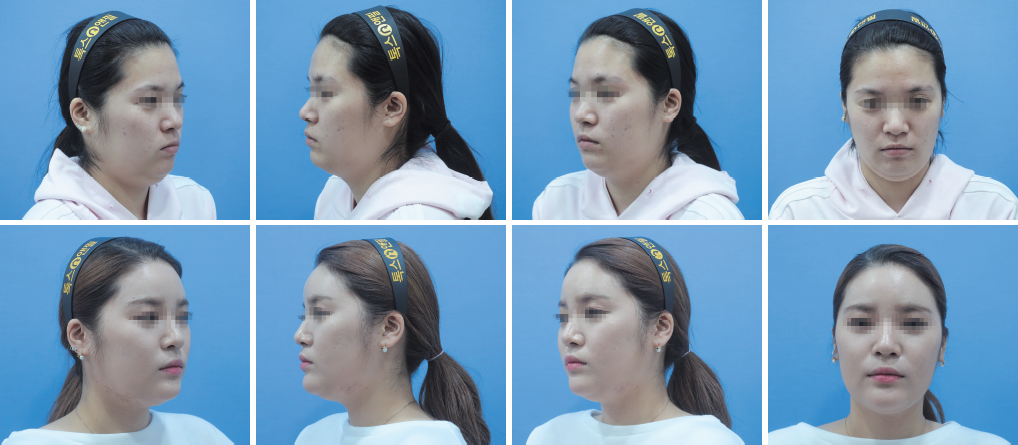
Techniques for Each Area
This design approach can easily be applied in other areas. Another example is filler correction of nasolabial folds. Use 70% of the entire filler amount in CZ and 30% in the rest of the areas to create a natural volume enhancement. As nasolabial fold can be accompanied with buccal fat sagging in older patients, avoid large amount injection in the lateral side. For chin or mentum correction, lower the last point of 3SC (c) and set the pogonion as the highest point to create an elegant and sophisticated outline.
It appears as though I have focused only on volume enhancement or reduction, however, as I have already discussed above, the most commonly used method is combining various treatments. This brings synergistic benefits. The details of the technique differ depending on the patient’s age, but the key point of jaw line correction (or V outline of the lower face) is minimizing LZ and RZ and volume enhancing CZ. In younger patients in their 20s to 30s, create slimmer outline with jawline botulinum toxin injection, contouring and sculpture injection and mentum filler. In patients in their 40s to 60s, facial aging sets in with collagen degradation. In this age group, the goal is to tighten sagging skin and not slimming as in younger patients. In the older patients, a rejuvenated and youthful V line of the lower face can be achieved with thread lift, HIFU applied to LZ and RZ.
[Advertisement] FCR® (Fractional Prickle CoralCalcium Regentron) – Manufacturer: (www.illglobal.com)]
These approaches can also be effective in the midface. In the nose area, avoid using large amounts in the nasion and heighten the subnasale to create a natural profile of the nose. The zygomatic arch tends to be overdeveloped in Asians, which can lower the overall convexity of the face. Most Koreans do have a well-developed zygomatic arch. As with other areas, induce subtle volume enhancement in CZ and slim the LZ and RZ of the midface; side of the zygomatic arch, 45° to the cheekbone. In most cases, I use contouring/sculpture injection to minimize volume. In patients with history of bimaxillary resection, elasticity can be drastically reduced. I recommend combining a lifting procedure.
Another example is under-eye hollowness (translucent infeior orbital line) can be corrected with a small amount of filler in CZ. The tightening effect from this procedure can also improve the lateral part. It is important to use small amounts in the under-eye area as manipulation in LZ or RZ can create a swollen appearance.

Image 5. Before and after the procedure.
Case Report
Lastly, I would like to include images of a case where this designing approach was used. The patient presented normal forehead and mandibular development but had underdeveloped maxilla and withdrawn chin. Also, a double chin developing from excess dieting further created a dull countenance. This case also presented overdeveloped glabella muscles due to habitual eyebrow furrowing. I created a mild mid line point in this case.
First, I used contouring and sculpture injections to correct the double chin, HIFU in LZ and RZ for narrower jawline and cheek volume reduction (3DC concept), volume filler in the forehead, glabella botulinum toxin injection to relax the muscle tension, nasal filler injection, and chin filler enhancement (3SC concept). Most of the patients in their 20s seek botulinum toxin masseter muscle reduction but this case presented underdeveloped lower jaws and masseter muscle reduction with botulinum toxin would have worsened the imbalance. Volume enhancement was used to supplement 3SC line and outcome was observed. The desired balance was achieved and masseter muscle reduction seemed unnecessary. Patient satisfaction was high as the treatment had no downtime, allowed quick return to normal activities and brought subtle, yet desired improvements. As shown here, it is easy to create desired aesthetic improvements by following the right goals of 3DC and 3SC and applying multiple modalities for overall facial outline correction.
-To be continued




















